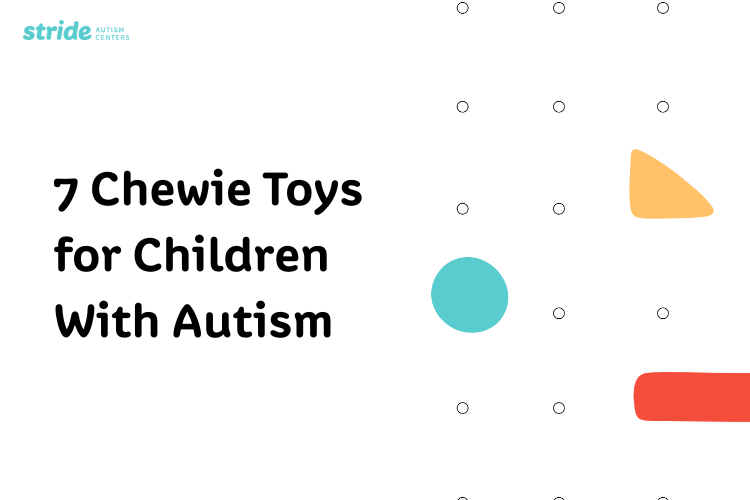Sensory seeking is part of childhood development. That’s why kids tend to put just about anything in their mouths. For kiddos with autism, this can take on a unique, sometimes extreme form. If you’re worried about your child chewing on their hair or clothes or biting their fingers or fingernails, there may be an underlying need behind this habit. Chewing could be helping them calm or regulate themselves.
That’s why you need a safe and effective way to address your child’s strong oral sensory needs or biting behaviors. An autism chew toy may be the answer.
Are Chew Toys Good for Kids With Autism?
Sensory chewies, sometimes called autism biting toys, are simple objects specifically designed to be safely chewed on. These nonfood items provide sensory input and a way to satisfy your child’s need to chew.
If you’re wondering if chew toys are good for autism, it’s important to consider why your child is choosing to chew. Autistic kids often experience their five senses differently, including their oral senses. While everyone needs oral sensory input, such as chewing, biting, and eating, kiddos with autism tend to have a higher-than-usual urge for oral stimulation. Chewing frequently serves as a coping mechanism to ease emotional tension or handle overwhelming sensations.
An autism chewie is a better alternative for everyone. Chewing these safe, purpose-built objects may help your child be calmer, happier, and more focused at home and school.
The 7 Best Sensory-Friendly Biting Toys
Choosing a sensory chew toy can be a daunting task. These objects come in a wide variety of sizes, shapes, textures, and colors — so how can you know which is right for your kid?
The best autism chew toy is the one that best matches their chew style and preferences. These items are often made from safe, nontoxic materials like silicone or fabric. The key is finding a chewie that can serve as a healthy alternative to what they’re currently obsessed with chewing — such as their clothing, tongue, the sides of their mouth, fingers, or other objects.
With that in mind, here’s your guide to the seven best chewie toys for autistic kids.
1. Chewelry
Chewelry is a sensory chew that resembles jewelry. They come in various styles, such as pendant necklaces, textured arm bands, or coiled bracelets, allowing you to choose a placement that draws your kiddo’s focus. Chewelry is helpful for those who may not want an obvious chew toy, as many options come in fun shapes and colors that allow kids to express their unique style.
2. Chew Sticks
If your child likes to bite down hard on objects, then you need a biting toy that’s built tough. Chewies from Chew Stixx™ are carefully designed for kids who chew through normal toys. These durable chews have various textures like bumps, ridges, and smooth surfaces.
3. Fabric Chewies
If you’re tired of soppy sleeves and wet collars, you may need a chewable that matches the comforting sensation of chewing on fabric. Often made from absorbent terry cloth, fabric chewies allow your kiddo to chew and suck more hygienically and discreetly than chewing on their clothing.
4. Pencil Toppers
If your child has started school, you may notice many chewed pencils and erasers. Chewable pencil toppers offer an effective substitute. Available in a variety of shapes and sizes, they allow your kiddo to chew while writing or doing another task that requires focus.
5. Chewable Fidgets
A chewable fidget is an excellent option if your child needs a way to keep their mouth and hands busy. From tactile hand toys in the shape of their favorite animal to satisfyingly chewy tubes, there’s sure to be a fidget that your kid will love to handle and bite.
6. Vibrating Chew Toys
Chewies with gentle vibrations can be a great way to provide a new level of sensory stimulation. These tools are often used to help children develop speech and feeding skills. However, this chewable toy is not for every child, as the vibrations may become overstimulating.
7. X-Shaped Chewies
For kids who chew with every part of their mouth, X-shaped or person-shaped bite toys can satisfy a need for deep pressure. The longer arms reach the back of the mouth, providing more opportunities for oral exploration.
Get the Support You Need at Stride Autism Centers







